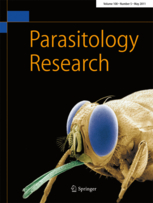 I have previously discussed the various genotypes of B.hominis and why in some patients the expected symptomatology is absent in the presence of occupation and in others symptoms are profound. You may read more on this subject by visiting: Blastocystis hominis. Is It Really A Problem?
I have previously discussed the various genotypes of B.hominis and why in some patients the expected symptomatology is absent in the presence of occupation and in others symptoms are profound. You may read more on this subject by visiting: Blastocystis hominis. Is It Really A Problem?
So whilst we may be aware that genotyping to identify subtype 1 would provide fairly unequivocal indication for intervention, most practitioners are still left wondering is the wet stained example in their stool test should be treated or not. I have previously explained in the same post that B.hominis has a technique of degrading SIgA in order to maintain adherence and pathogenicity, and have recommended that in conjunction with antimicrobials that the yeast species Saccharomyces Boulardii be utilised in conjunction.
A paper out in Mar 2011 in the journal Parasitology Research indicates that it may be used as stand-alone treatment in childhood infections.[1]
The author’s state:
Although many Blastocystis infections remain asymptomatic, recent data suggest it also causes frequent symptoms. Therapy should be limited to patients with persistent symptoms and a complete workup for alternative aetiologies.
The goal of this study was to compare the natural evolution (no treatment) to the efficacy of Saccharomyces boulardii (S. boulardii) or metronidazole for the duration of diarrhoea and the duration of colonisation in children with gastrointestinal symptoms and positive stool examination for Blastocystis hominis.
This randomised single-blinded clinical trial included children presenting with gastrointestinal symptoms (abdominal pain, diarrhoea, nausea–vomiting, flatulence) more than 2 weeks and confirmed B. hominis by stool examination (B. hominis cysts in the stool with microscopic examination of the fresh stool). Note: No genotyping – just symptomology
The primary end points were clinical evaluation and result of microscopic stool examination at day 15. Secondary end points were the same end points at day 30. Randomisation was performed by alternating inclusion:
- group A, S. boulardii (250 mg twice a day, SB-LYO®) during 10 days;
- group B, metronidazole (30 mg/kg twice daily) for 10 days;
- group C, no treatment.
At day 15 and 30 after inclusion, the patients were re-evaluated, and stool samples were examined microscopically. On day 15, children that were still symptomatic and/or were still B. hominis-infected in group C were treated with metronidazole for 10 days.
There was no statistically significant difference between the three study groups for age, gender, and the presence of diarrhoea and abdominal pain.
On day 15, clinical cure was observed in
- 77.7% in group A (n, 18);
- in 66.6% in group B (n, 15); and
- 40% in group C (n:15) (p < 0.031, between groups A and C).
Disappearance of the cysts from the stools on day 15 was
- 80% in group B,
- 72.2% in group A, and
- 26.6% in group C
(p = 0.011, between group B and group C; p = 0.013, between group A and group C).
At the end of the first month after inclusion, clinical cure rate was
- 94.4% in group A and
- 73.3% in group B (p = 0.11).
Parasitological cure rate for B. hominis was very comparable between both groups (94.4% vs. 93.3%, p = 0.43). Metronidazole or S. boulardii has potential beneficial effects in B. hominis infection (symptoms, presence of parasites). These findings challenge the actual guidelines.
Comment
Although the mechanisms by which S. boulardii might exert its activity remain unclear, several have been proposed. Clinical resolution and clearance of the organism may be due to the efficacy of the treatment on B. hominis and/or because of elimination of other undetected organisms and/or because of an improved balance of the gut microflora.
Adults with B. hominis infection may consider doubling the dosage to reflect the larger gastrointestinal tract area.
Reference
[1] Dinleyici EC, Eren M, Dogan N, Reyhanioglu S, Yargic ZA, Vandenplas Y. Clinical efficacy of Saccharomyces boulardii or metronidazole in symptomatic children with Blastocystis hominis infection. Parasitol Res. 2011 Mar;108(3):541-5. Epub 2010 Oct 5. View Full Paper






2 Comments. Leave new
Buongiorno da mesi ho scoperto di avere il blastocistis hominis, prima ho trattato con metronidazolo che non ha fatto il suo effetto, adesso sto prendendo humatin(paramomicina), a fine terapia farò l analisi delle feci, se questo blastocistis non scompare vorrei smettere di prendere antibiotici,. Il probiotici saccahromyces boulardii veramente aiutano a debbellarlo?
Dear Enrico
Thank you for your enquiry in regard to Blastocystis hominis, as you will have read there are a number of challenges to achieving eradication.
Saccharomyces Boulardii has shown good results but on its own may prove ineffectual, additional lifestyle changes regarding foods and spices are advised to be part of any treatment, drugs or others.
This paper has some useful indications of what can be used and I suggest that you refer to it when determining the next step.
Lepczyńska, M., Białkowska, J., Dzika, E. et al. Blastocystis: how do specific diets and human gut microbiota affect its development and pathogenicity?. Eur J Clin Microbiol Infect Dis 36, 1531–1540 (2017). https://link.springer.com/article/10.1007/s10096-017-2965-0
Best wishes and a speedy recovery to your health